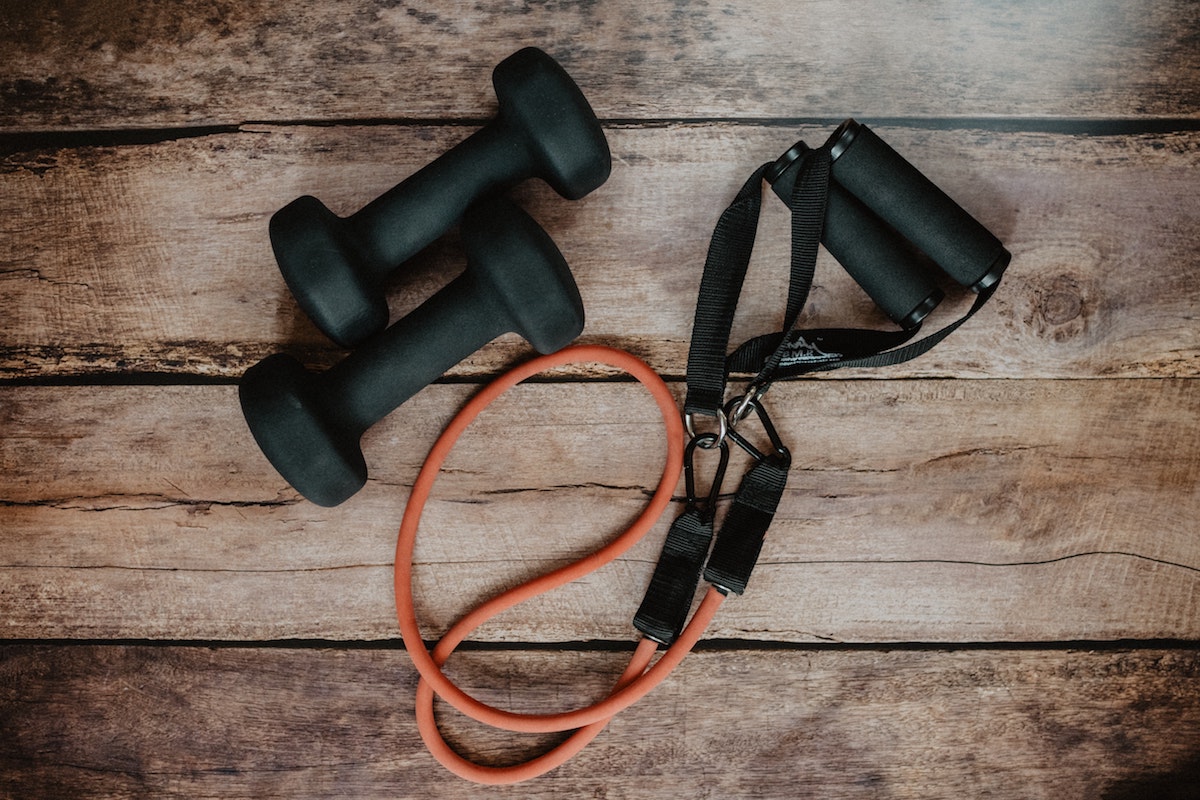
Lateral raises are a fundamental part of any shoulder workout routine. They primarily target the deltoid muscles, helping to enhance shoulder width and strength. Incorporating lateral raises into your workout regimen can contribute to a balanced upper body and improved overall shoulder stability.
In this guide, we’ll delve into how to do lateral raises, including the equipment you’ll need, the muscles involved, the possible variations, and even the potential risks associated with this exercise. You’ll learn absolutely everything you need to know about lateral raises and be able to do this crucial exercise with confidence. Let’s get started!
What equipment do you need for lateral raises?

Lateral raises require very little equipment, making them easy to do both at the gym and at home. All you need are dumbbells or resistance bands to provide the necessary resistance for the movement. Dumbbells allow you to choose your own weight and increase it as you get stronger, but resistance bands provide constant tension throughout the exercise, challenging the muscles in a different way.
You can also use cable machines or gym machines designed specifically for lateral raises. These have the advantage of being designed more specifically to help you do this one exercise, but if you’re at home, basic dumbbells or resistance bands will do just as well. The versatility of lateral raises is another reason why they’re one of the best shoulder exercises.
What muscles do lateral raises target?

Lateral raises primarily target the lateral deltoid, which is the middle head of the deltoid muscle. They also engage the supraspinatus, a smaller shoulder muscle located above the shoulder joint. While the lateral deltoid is the primary mover during lateral raises, other muscles, including the anterior deltoid, trapezius, and serratus anterior, help stabilize the shoulder joint throughout the movement, and this works them as well.
How to do lateral raises

Make sure to use proper form for lateral raises to reduce the risk of injury. This will also increase the exercise’s effectiveness. Follow these steps to perform lateral raises correctly:
- Stand with your feet shoulder-width apart, holding a dumbbell in each hand by your sides, palms facing inward.
- Engage your core muscles to maintain stability throughout the exercise.
- With a slight bend in your elbows, exhale and raise the dumbbells out to the sides until your arms are parallel to the floor.
- Keep your wrists straight, and avoid using momentum to lift the weights. Focus on using the deltoid muscles to perform the movement.
- Hold the top position for a brief pause, then inhale as you slowly lower the dumbbells back to the starting position.
- Repeat for the desired number of repetitions, maintaining controlled movements throughout.
Lateral raise variations

Dumbbell lateral raises
Dumbbell lateral raises are the variation given above, using dumbbells for resistance. This variation allows for a full range of motion and provides unilateral training, helping to address any strength imbalances between the left and right sides of the body.
Cable lateral raises
Cable lateral raises involve using a cable machine with adjustable pulleys and a handle attachment. Stand with your side towards the cable machine, grasp the handle, and perform lateral raises while maintaining tension on the cable throughout the movement.
Cable lateral raises provide continuous resistance, challenging the muscles through both the lifting and lowering phases of the exercise. You can also do the exercise almost the same way using resistance bands attached to something below your arms.
Machine lateral raises
Many gyms have a lateral raise machine, which typically has padded arms that move in a fixed range of motion. Sit or stand in the machine and adjust the seat and handles to align with your shoulder joints. Grasp the handles and lift the padded arms out to the sides until your arms are parallel to the floor, then lower them back down under control. Machine lateral raises are great for beginners or for people who struggle with free weights due to stability or mobility issues.
How often should you do lateral raises for results?

The answer to this question depends on the individual, mostly based on your fitness goals and workout routine. If you use push-day and pull-day workouts, for example, lateral raises would be part of a push-day workout. If you train your upper and lower body on different days, lateral raises will go in your upper body workout, whenever that is.
If you don’t have a structured workout regimen at all, you can do lateral raises two or three times per week. Make sure you’re allowing enough recovery time between sessions. It’s also a good idea to do other shoulder exercises in the same workouts to keep your muscles balanced and reduce the risk of injuries. You should always allow at least one rest day between training the same part of your body (in this case, your shoulders).
Are there any risks of lateral raises?

Lateral raises are, generally, fairly safe exercises. In fact, they’re sometimes recommended as a replacement for overhead presses since they work the same muscles but have less risk of a rotary cuff injury. There are still some risks to be aware of, though.
Using excessively heavy weights or resistance can increase the risk of shoulder impingement or strain. To avoid this, start with lighter weights and focus on gradually increasing the resistance as your strength improves. You should also avoid using momentum to lift the weights, which can place unnecessary stress on the shoulder joints and increase the likelihood of injury.
Editors' Recommendations
- Working out on keto: Maximize your fitness plan with this handy guide
- How to do a goblet squat: Your complete guide
- How to do a leg press: Everything you need to know
- Sound therapy to improve your workouts: does it really work?
- Anyone can do Chris Hemsworth’s 15-minute resistance band workout



